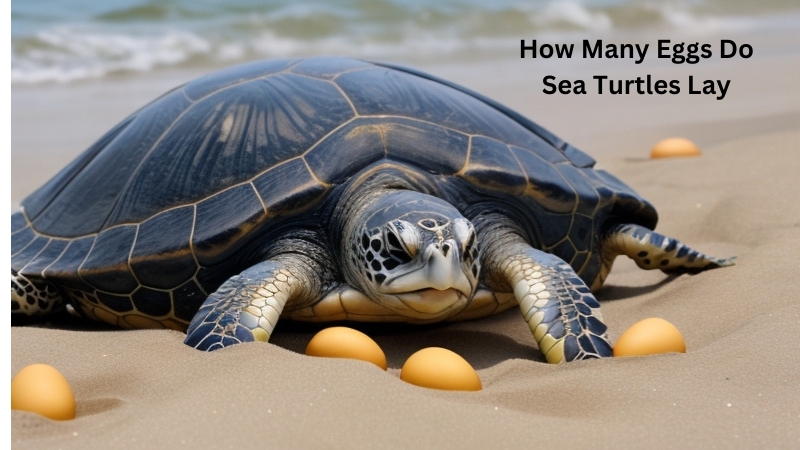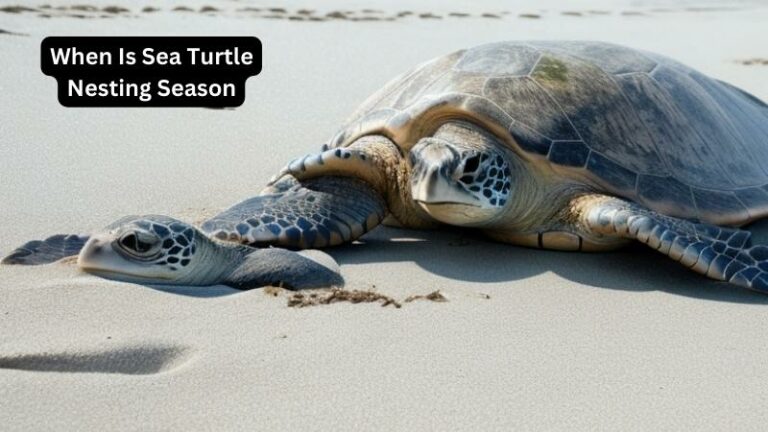How Many Eggs Do Sea Turtles Lay
Today we discuss How Many Eggs Do Sea Turtles Lay. Sea turtles, fascinating creatures that roam the ocean depths, have captivated the hearts and minds of marine enthusiasts for centuries. From their graceful movements to their incredible nesting habits, these majestic reptiles continue to leave us in awe. One question that often arises when discussing sea turtles is, “How many eggs do they lay?” In this article, we will delve into the remarkable world of sea turtle reproduction and reveal the astonishing numbers behind their egg-laying process.
Sea turtles, comprising seven distinct species, embark on a perilous journey each year to lay their eggs on sandy beaches. These ancient wanderers often travel vast distances, guided by an innate sense of navigation, until they reach the very spot where they hatched decades ago. It is during these nesting excursions that female sea turtles showcase their extraordinary ability to lay hundreds of eggs in a single nesting season.
However, the exact number can vary depending on several factors, such as the species of turtle and the individual’s age and health. Join us as we unravel the mysteries surrounding sea turtle reproduction and uncover the astonishing quantities of eggs these magnificent creatures can produce.
How many eggs do sea turtles lay?
Sea turtles are fascinating creatures that have been around for millions of years. They have a unique life cycle, with one of the most critical stages being the nesting process. During nesting season, female sea turtles come ashore to lay their eggs in the sand. But how many eggs do sea turtles lay? Let’s explore this question in detail.
1. The nesting process
The nesting process of sea turtles is a remarkable sight to behold. After mating in the water, female sea turtles make their way to the beach where they themselves hatched. They find a suitable spot in the sand and begin digging a nest using their rear flippers. Once the nest is ready, the female sea turtle starts laying her eggs.
Sea turtles typically lay anywhere between 50 to 200 eggs in a single nest, depending on the species. The exact number may vary, but this range is common across different sea turtle species. After laying the eggs, the female covers the nest with sand and carefully camouflages it to protect it from predators.
2. Incubation period
Once the eggs are laid, they have an incubation period that lasts for several weeks. This period can vary depending on factors such as temperature and species. It is crucial for the eggs to remain undisturbed during this time to ensure successful hatching.
During the incubation period, the temperature of the nest plays a significant role in determining the sex of the sea turtle hatchlings. Warmer temperatures tend to produce more females, while cooler temperatures result in more male hatchlings. This natural mechanism helps maintain a balance in the sea turtle population.
3. Hatchling emergence
After the incubation period, the hatchlings begin to emerge from the nest. This process is often referred to as the “boil” as multiple hatchlings come out of the sand simultaneously. It is a critical and vulnerable time for the hatchlings as they make their way towards the ocean.
Only a small percentage of the hatchlings will survive to adulthood due to various threats they face, such as predators, pollution, and human interference. This emphasizes the importance of conservation efforts to protect sea turtles and their nesting sites.
4. Conservation efforts
Given the decline in sea turtle populations worldwide, numerous organizations and initiatives have been established to protect these magnificent creatures.
Conservation efforts include monitoring nesting sites, implementing measures to reduce pollution and habitat destruction, and raising awareness among local communities and tourists.
By understanding the nesting process and the number of eggs sea turtles lay, we can appreciate the challenges they face and work toward their conservation.
It is our responsibility to ensure the survival of these ancient creatures for future generations to marvel at.

Faqs How Many Eggs Do Sea Turtles Lay:
Sea turtles lay a varying number of eggs depending on the species. On average, sea turtles lay around 100 to 150 eggs per nesting season.
However, some species, such as the leatherback sea turtle, may lay fewer eggs, typically between 50 to 80. Conversely, other species like the loggerhead sea turtle can lay larger clutches of around 100 to 126 eggs.
It is important to note that not all eggs laid by sea turtles will hatch and survive. Natural predation, environmental factors, and human interference can significantly impact the survival rate of sea turtle eggs.
No, different sea turtle species have varying clutch sizes. As mentioned earlier, the average number of eggs laid by sea turtles ranges from 100 to 150.
However, each species has its own specific reproductive characteristics. For example, the green sea turtle lays an average of 110 eggs, while the hawksbill sea turtle lays around 140 eggs per nest.
The Kemp’s ridley sea turtle, one of the smallest sea turtle species, lays the highest number of eggs, with an average clutch size of 100 to 120 eggs.
The variation in clutch sizes is influenced by factors such as the size of the adult female, the species’ reproductive biology, and ecological adaptations.
Sea turtles do not lay eggs every year like some other animals. Most sea turtle species have a nesting interval of 2 to 4 years. This means that after a female sea turtle lays her eggs, she will typically not reproduce again for a few years.
The nesting interval allows the female to conserve energy and resources before undertaking the demanding process of nesting and egg-laying once more.
During the nesting season, which varies by species and location, female sea turtles may lay multiple clutches of eggs, with each clutch being separated by several weeks.
Sea turtles typically return to the same beach where they were born to lay their eggs. This behavior is called natal homing and is a remarkable navigational feat. Each species of sea turtle has specific nesting grounds, and they often travel long distances to reach these beaches.
Once at the nesting beach, female sea turtles will dig a nest in the sand using their flippers. They prefer beaches with soft, sandy substrates that allow them to easily excavate a nest cavity. After laying their eggs, they carefully cover the nest with sand before returning to the ocean.
The incubation period for sea turtle eggs varies depending on factors such as the species, temperature, and moisture levels. On average, it takes around 45 to 70 days for sea turtle eggs to hatch. However, this timeframe can be shorter or longer depending on the specific conditions of the nest.
The temperature of the nest plays a crucial role in determining the hatchling’s sex. Warmer temperatures generally produce more females, while cooler temperatures result in more males.
Once the eggs are ready to hatch, the hatchlings use a specialized tooth called a caruncle to break open the eggshell and make their way to the surface.
From there, they instinctively head towards the ocean, guided by the natural light and reflection of the moon over the water.
For Olive Ridley Sea Turtles, Laying Eggs is Grueling Work
conclusion:
the question of how many eggs sea turtles lay is not a simple one to answer. While it is true that sea turtles typically lay a large number of eggs in a single nesting season, the exact number can vary greatly depending on the species. From the massive leatherback turtles that can lay around 100 eggs per nest to the smaller loggerhead turtles that lay around 50 to 120 eggs, each species has its own unique reproductive strategy. Furthermore, factors such as the turtle’s age, health, and environmental conditions can also play a role in the number of eggs laid.
Understanding the reproductive patterns of sea turtles is not only fascinating but also crucial for their conservation. By studying and monitoring their nesting habits, scientists can gain valuable insights into the overall health of their populations. This knowledge can then be used to develop effective conservation strategies to protect these magnificent creatures and their fragile ecosystems. Ultimately, the question of how many eggs sea turtles lay serves as a reminder of the intricate and delicate balance of nature, and highlights the importance of our role as stewards of the environment.


